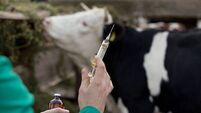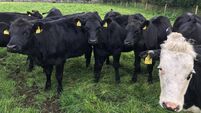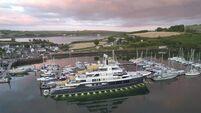Environment groups are considering legal action
This is the plan to increase primary food output by 33%, food value-added by 40%, and food exports by 42%, between now and 2020.
The European Commission has told the Irish environmental campaigners it has initiated an enquiry to seek information from the Government. This is the procedure followed by the commission when complaints are received, says Tony Lowes, director, Friends of the Irish Environment (FIE), who co-ordinated a call by 14 Irish non-governmental environmental organisations to Agriculture Minister Simon Coveney, to ensure the ambitious FH2020 targets are formally assessed under EU directives before they are adopted.
>>Unfortunately, no. These committees can only make recommendations. The minister did not accept them.
The SEA directive is aimed at introducing systematic assessment of the environmental effects of strategic land-use plans and programmes. Information can cascade down through the tiers of decision-making and can be used when — say — new plants are required for food production or processing.
The minister, however, has said that FH2020 is an “industry-led initiative” not a “Government plan”, which would bring it under the SEA directive. Instead, there will be an ad hoc “environmental analysis of various scenarios”.
>>Follow the habitats directive. It requires a staged assessment for “any plan or project not directly connected with, or necessary to, the management of a designated European site, but which could damage the site”.
For example, most of our rivers are designated for protection.If excess nutrients run off into them, it will damage water quality — which, in turn, damages the aquatic environment, from plants to fish to birds.
The first step is a ‘screening’ procedure. If an impact cannot be ruled out, an ‘appropriate assessment’ follows. If this shows adverse impacts, then ‘avoidance’ and ‘mitigation’ measures must be implemented — in our example, perhaps additional buffer zone setbacks from rivers. If these cannot solve the problem, alternative plans have to be considered. Only in the case of ‘overriding public interest’ can a plan proceed if it is going to damage a protected environment.
>>It could, but the pitch must be based on scientific assessment, not green-wash. The ‘Origin Green’ campaign has Saoirse Ronan saying: “Our climate has always been this mild, our landscape this lush; our fields have always been this green and windswept and rain-washed.”
This kind of nonsense only undermines our credibility.
>>Yes. It’s critical. But, again, all the EPA can do is recommend — such as in its recently released report ‘2012 Ireland’s Environment. An Assessment’, which says: “Sectoral initiatives, such as Food Harvest 2020, need to take full account of environmental/biodiversity concerns in their implementation. Sectoral plans, programmes, and projects should be subject to SEA, EIA and appropriate assessment processes, where required.”
>>No, it’s future-proofing. Take the nitrates regulations derogation, granted by the commission in 2006. It was based on a decline in cattle, pig, and sheep numbers of 7%, 3%, and 17% in the period 1997 to 2004. When the derogation is due for renewal in 2013, the increase in numbers proposed by FH2020 could make Brussels think Ireland is sending the fool further.
There are also key issues that do not come under the habitats directive — greenhouse gases, climate change, our high levels of water-borne infections and parasites, land structure and mobility, food waste — even archaeology.
>>There are a lot of directives — so let’s hope so. But there are two problems. The first is that we don’t know what aquaculture operators are putting into the environment; records are held by the companies, and not the regulatory authorities. The second is even more fundamental. Our Ocean Wealth’ now plans three super-farms, each equal to the total national production of farmed salmon. The EIA for the first, in Galway Bay, is due out next month. The problem is that the licence application is being made by the minister’s own agency, BIM. BIM will then lease the approved licence to the highest bidder. Thus, the applicant for the licence is an agency of the licensing authority. Nowhere but in Ireland.













![Johnny_Stephens_Photography-02-425A6831-Edit[1].jpg Restaurant review: The Ivy Asia is an assault on all five senses — I hated it](/cms_media/module_img/9752/4876311_6_teasersmall_Johnny_Stephens_Photography-02-425A6831-Edit_5b1_5d.jpg)
